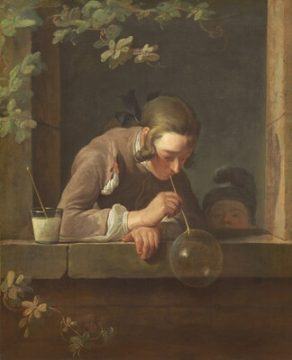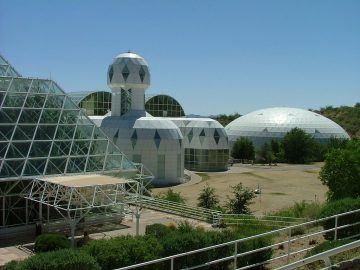by Charlie Huenemann
“Every country is going through these decisions, none of us are through this pandemic yet, but some countries are starting to look at slightly expanding what people would define as their household — encouraging people who live alone to maybe match up with somebody else who is on their own or a couple of other people to have almost kind of bubbles of people,” she [Scottish First Minister Nicola Sturgeon] told BBC Radio Scotland.
“Want to join my bubble? This is what your future social life could look like”, Angela Dewan, CNN, April 29th, 2020.
A crisis, by definition, has dramatic effects. It changes how we behave, where wealth goes, what policies we enact, and what we hope. But it also can bring into higher relief features of our lives that have not changed, but turn out to be more important than we realized.

Like the fact that human life takes place in bubbles. This just means that humans like to form groups: somewhat closed networks of interactive relationships among a small number of relatives or friends whose principal job it is to care for one another. “Semi-permeable palliative social matrices” one could call them, but “bubbles” will work just fine. A bubble is an enclosed space, protected from the outside by a fragile boundary; all its points are equidistant from a center; it is almost invisible, but offers a hopeful shine when the light hits it right. All the same can be said of a circle of good friends. And all of human history has been built upon such bubbles.
This crucial anthropological insight has been explored in nearly inexhaustible depth by the contemporary philosopher Peter Sloterdijk, particularly in his trilogy Spheres. Humans are born from round wombs into family circles, sometimes gathered in igloos and tipis, or around a hearth, following a circle of seasons under the orbs of moon and sun, growing into adulthood before they start the cycle again.
Sloterdijk writes that “every act of solidarity is an act of sphere formation, that is to say the creation of an interior”, and further explains the importance of sphere-making to the never-ending human endeavor to figure out what it all means:
“Every social form has its own world house, a bell jar of purpose, under which human beings first of all gather, understand themselves, defend themselves, grow and dissolve boundaries. The hordes, tribes and peoples, and the empires all the more, are – in their respective formats – psychosociospheric quantities that arrange themselves, climatize themselves and contain themselves. At every moment of their existence, they are forced to place above themselves, by their typical means, their own semiotic heavens from which character-forming inspirations can flow to them.”
When something like a pandemic hits, we are forced to fall back upon our local “psychosociospheric quantities”, or bubbles, within which we can protect ourselves and take care of one another. When times get better, the walls of our bubbles become more permeable, and we pass in and out with greater ease; but at any moment we can retreat to them and increase their shield strength. That’s what it means to belong to a family.

On a smaller scale, we exert control over our homes and apartment complexes, with the aim of making them enclosed, safe, and protected – concerns which have been amplified in the COVID era. Establishing a dwelling, Sloterdijk writes, is an attempt at immunity, or “a defensive measure by which an area of well-being is isolated from invaders and other bringers of unwell-being.” As our many bubbles insulate themselves, and border one another, a viewer from outer space may see that they begin to resemble foam, or mountains of bubbles taking on larger forms. Our world is not so much a great big single orb, as dreamt by both theologians and rationalists alike, but a pluralistic foam of many small worlds. “So the one Orb has imploded – now the foams are alive.”
But this obviously raises new problems for us: for what is a “whites-only” enclave, if not a bubble protecting its racist members against “bringers of unwell-being”? What is a refusal to accept refugees, if not an effort to isolate ourselves from foreign invaders? To what extent will the isolation efforts we employ against COVID become exercises in xenophobic barbarism? Somehow, if we are to avoid this consequence, we have to get our bubbles together, and get them talking to each other, without losing their protective, bubbly nature. I have no idea what this means, and neither does Sloterdijk, I think, though he crafts some beautiful words about the project:
“What lies before us is the task of marking multiplicities of individual space among humans as processes of foam in which defense and invention merge into each other – as speaking foams, one could say, as immune systems that dream beyond themselves … via the establishment of a personalized traffic system, to the creation of a customized world picture poem.”
“Immune systems that dream beyond themselves” – this, I think is the key. Yes, care for your dear bubblemates. But from time to time, look over to the other bubbles, and the shape of the foam that is building up, and make that also some of your concern. And while we’re at it, with all the bubbles and foam, don’t forget to wash your hands.
